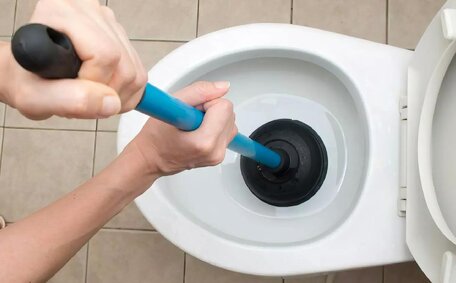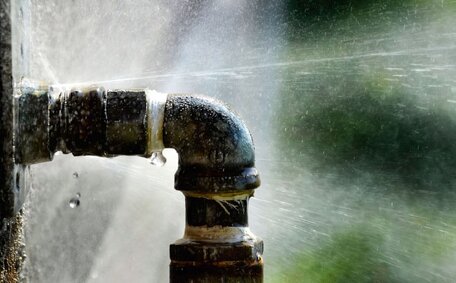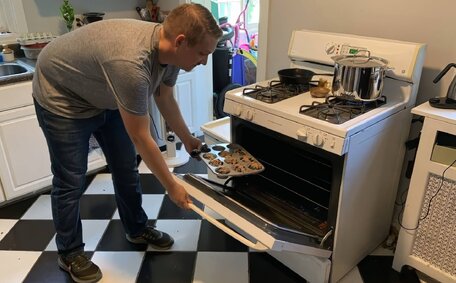Introduction to Plumbing Pipe Lifespans
Your plumbing system’s supply pipes generally last between 50 and 70 years. Some types, such as polyvinyl chloride (PVC), can endure indefinitely with proper care. However, The lifespans of various pipes differ, influenced by material quality and exposure to wear and tear.
Generally, copper pipes can last 50-70 years, galvanized steel pipes around 30-50 years, cast iron over 50 years, and ABS plastic upwards of 80 years. The lifespan range is wide because ABS pipes durability depends heavily on proper installation, water quality/pressure management, and preventative maintenance.
Professionally conducted inspections reveal when pipe sections are due for replacement and facilitate close monitoring for potential issues. Catching small leaks early and addressing root intrusion prevents catastrophic failures in the pipes your home depends on. Ensuring a continuous water supply hinges on regular pipe evaluations and timely repairs.
Common Residential Plumbing Pipe Types
Copper pipe lines, known to last around 50-70 years, are a widely used option for hot water systems in Australian residences. Its durability and effectiveness in transporting water means it can have a long service life of 50-70 years with proper maintenance. Copper is prone to pinhole leaks as it ages, thus it’s important to keep an eye on small drips or drops in water pressure.
PVC (polyvinyl chloride) plastic pipes, often seen in hot water heater installations, are cost-effective and corrosion-proof, enduring indefinitely with correct installation. PVC pipes are commonly employed in cold water lines and drainage systems. Be aware of potential impacts from high heat or UV exposure which can shorten lifespan prompting you to call professional help.
PEX pipes, crafted from crosslinked polyethylene, are increasingly favoured for their reliability alongside modern water heaters. Despite being more costly, these resilient pipes are integral to tank water systems, sharing a lifespan over 50 years akin to water heaters. Ensure PEX tubes are shielded from direct sunlight as UV rays can weaken material.
Cast iron drain pipes in your home are known for their durability, yet they’re also susceptible to rust. These pipes should replaced and should be considered for a thorough inspection, as they can last more than 50 years if regularly checked and free of root invasion or deterioration. Be vigilant for indicators such as rust particles in water, diminished drainage speed, or leaks.
as warning signs.
Copper
Copper pipes are reliable plumbing materials, crafted from robust reddish metal that often exceeds the 50-year average lifespan. Copper’s resistance to corrosion makes it an optimal choice for water supply pipes in both cold and hot water lines.
While durable, older copper pipes may develop tiny pinhole leaks over time. This is due to natural erosion but can be prevented with proper pH balance and water treatment. Maximise durability by swiftly conducting home plumbing inspections to identify drips, leaks, or pressure changes.
In sum, copper pipes boast a particularly extended life expectancy. Pondering how long they might continue to function and endure? With only occasional repairs, copper can easily function well for 70+ years. We recommend watching for signs of wear and having a plumber inspect ageing copper every 2-3 years.
PVC
PVC pipes, ideal for hot cold water lines, have an indefinite lifespan and are commonly used for drain, waste and vent systems. The durability and resistance to corrosion and abrasion make PVC pipes an essential choice for sewer systems. However, they can become brittle and degraded when exposed to prolonged UV light or high heat.
Thoroughly cement joints using solvents and allow for complete curing times. Improper assembly can lead to leaks or cracks.
Maintain neutral pH levels and ensure to dilute acidic or basic substances, including drain cleaners, before disposal. Regularly inspect for cracks or leaks, which indicate wear. With appropriate upkeep, PVC systems have the potential to last indefinitely.
PEX
PEX (crosslinked polyethylene) is a flexible plastic piping material gaining popularity for use in water supply lines. Resistant to scale, chlorine, and corrosion, PEX piping’s flexibility allows it to navigate corners and joints with ease.
PEX piping typically enjoys a lifespan of at least 50 years when installed correctly. One study revealed that after 25+ years, 95% of PEX samples showed robust performance without any chemicals into the water flow from degradation or leaching of plasticizers.
Nevertheless, there are some longevity considerations associated with PEX. Over time, UV light, oxygen permeation, and strain can start to weaken pipes. Make sure all PEX tubing stays shielded from sunlight and avoid exposure to solvents or lubricants that could cause cracks.
Cast Iron
Renowned for its robustness, cast iron is a preferred choice for sewer and drainage lines, enduring several decades. With adequate maintenance, cast iron pipes can endure for up to 100 years, displaying remarkable durability.
Cast iron is resistant to corrosion and can last well over 50 to 100+ years when installed underground or encased in concrete. However, over time pipes are still susceptible to rust flakes, leaks at joints, cracks, and root intrusion which can lead to clogs or collapses.
To maximise lifespan, monitor your sewer drainage speed and inspect pipe joints during routine plumbing assessments. Catch issues early before they turn into costly emergency repairs down the road, ensuring the system was built to endure.
Factors Affecting Pipe Lifespans
Several key factors influence the lifespan of your home’s plumbing pipes:
Water Quality
The mineral and chemical composition of water flowing through pipe material takes a toll over time. Hard water, with high levels of minerals such as calcium and magnesium, accelerates pipe erosion. Acidic, basic or highly-chlorinated water also degrades certain materials.
Installation & Maintenance
Incorrect installation or lack of maintenance can drastically reduce the lifespan of plumbing components. Guarantee that pipes are well-supported, joints are leak-proof, and regular assessments address minor leaks promptly. Tree roots, freezing temps, soil erosion and ground shifts put extra strain on pipes.
Wear & Tear
Natural abrasion from water flow can caused gradual erosion in pipes. Areas with high water pressure or turbulent flow often fail sooner. Older lead, galvanised steel, and iron pipes tend to accumulate mineral deposits and rust flakes, restricting water flow.
Being proactive protects your plumbing. Have a professional plumber routinely inspect condition, troubleshoot issues early, and guide repairs to maximise pipe lifespan.
Water Quality and Chemistry
Water chemistry, including pH and mineral content, critically affects the longevity of pipes. Factors like pH, mineral levels, and disinfectants dictate how much of a gradual toll is taken over time.
Here in Brighton-Le-Sands, it might time to consider the water tends to be moderately hard with a neutral pH. This means water pipes are less prone to corrosion issues compared to regions with more acidic water. However, in an older home, cast iron galvanized pipes still accumulate mineral deposits, affecting drinking water quality, over decades which can restrict flow.
To protect pipes, inspect condition regularly and have a plumber test water chemistry. Installing filters and softeners can help control properties that erode pipes. Ultimately, understanding your water quality enables proactive maintenance to maximise lifespan.
Installation and Maintenance
Proper installation is critical, as the material used for pipes influences their maximum lifespan potential before you need to replace your plumbing. All pipes must be properly supported and stabilised. Joints and connections, whether they be stainless steel or other materials, should be tightly sealed using solvents, cements, solders, or crimp fittings as specified by manufacturers.
Routine maintenance is also essential. Have a licenced plumber periodically inspect pipes to check for leaks, corrosion, clogs, flow issues or early signs of failure. They can test water quality, troubleshoot problems, and guide repairs to prevent catastrophic pipe failures.
Homeowners must be proactive in maintaining their house’s pipes:
- Inspect visible pipes for drips, leaks, cracks or bulges
- Check under sinks for signs of moisture or loose fittings
- Listen for running water indicating leaks
- Monitor water pressure at taps
- Clear homeowner-accessible drain lines
Catching minor leaks early, clearing clogs before they burst pipes, and getting professional assessments prevents expensive emergency repairs down the road. Proper installation combined with vigilant preventative maintenance is key to maximising the lifespan of your home’s plumbing.
Signs Your Pipes Need Replacement
There are a few clear signs that indicate your pipes have aged and should last be replaced:
Frequent Leaks or Drips
Buildup of mineral deposits and corrosion in older pipes restricts water flow. Decreased water pressure at taps hints at underlying pipe issues.
Discoloured Water
Rust flakes or sediment in water could mean suspect your pipes are corroding iron, steel or galvanised pipes. Have this tested and addressed promptly.
For assessments of your pipes’ condition, lifespan prognosis, and replacement recommendations, contact our team at Brighton-Le-Sands Plumbing on 1300 349 338 or [email protected].
Corrosion and Leaks
Corrosion and small leaks are common signs of ageing pipes nearing the end of their lifespan. Visually inspect pipes where possible for rust flakes, green buildup, pinholes, drips or moisture around joints and fittings. Listen for the sound of running water, an indication lines can have hidden leaks.
Ignoring early signs of corrosion can lead to catastrophic pipe failures, water damage, flooding, mould growth, requiring expert plumbing services for repair. For any worrying drips, discoloration, flow alterations, or pressure drops, reach out to our plumbing company for expert pipe assessments.
Whether it’s targeted spot repairs, comprehensive pipe repair, or complete system replacements, Brighton-Le-Sands Plumbing has all expertise and modern equipment to solve your pipe corrosion problems.
Trust our licenced specialists and contact us today for the safest, most effective pipe rejuvenation treatments. Extend the life of your plumbing with proactive corrosion control from Brighton-Le-Sands Plumbing. Call us on 1300 349 338 or email [email protected] to book your pipe assessment and discuss repair options.
Low Water Pressure
Noticeably low water pressure at taps or fixtures is often indicative of larger plumbing issues that warrant investigation. Over time, affecting the pipes life, buildup and blockages in pipes restrict flow, even if no exterior leaks exist. Older galvanised steel is prone to accumulating mineral deposits and they need replaced more frequently while tree roots can gradually invade clay pipes or cast iron drainage lines.
It’s what you need know about when having a licenced plumber conduct thorough diagnostics when pressure loss is detected. They can use pipe inspections and water flow tests to identify underlying factors reducing pressure and determine necessary repairs. Tackling these root causes, whether pipe corrosion, junction clogs or scale accumulation proactively preserves normal water pressure and prevents subsequent leaks or bursts.
Discolored Water
Discoloured or rust-flecked water from your taps can signify deteriorating interior metal pipes like galvanised steel or older copper. This typically results from internal corrosion and buildup of mineral sediment over decades of use.
Should you observe brown, yellow, or reddish tinges in your water, arrange a professional plumber inspection with us today. They can diagnose issues making pipes more susceptible using camera technology and specialised testing equipment.
Depending on pipe condition, we can also recommend targeted repairs, epoxy coatings to stabilise corrosion, or full pipe replacements if severely compromised. Ignoring discolouration risks more leaks, pressure loss, and contamination of your home’s water supply and household appliances.
For assessments, repairs or replacements of discoloured plumbing pipes, contact the licenced team at Brighton-Le-Sands Plumbing on 1300 349 338.






